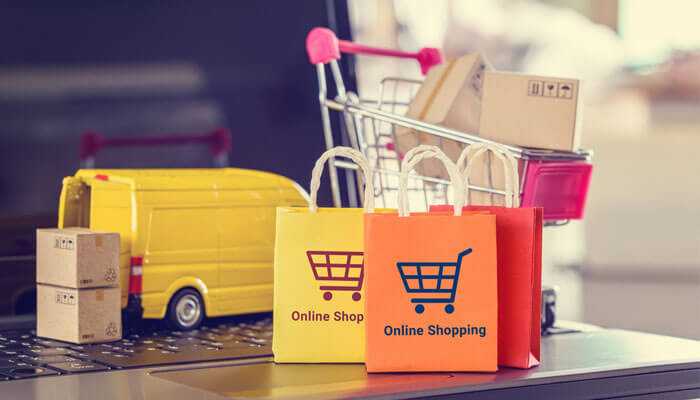Last year was another great year for the eCommerce industry. According to Statista, the worldwide revenue of eCommerce in 2016 (till August) amounted to almost 1,183 billion USD. This revenue is expected to grow at a compound annual growth rate of almost 10.72 percent. This would result in a market volume of 1,777 billion USD by the end of the year 2020. These numbers are self-explanatory about the growth of e-commerce around the world.
The world we are living in is globally connected. Fads are now often confused for “trends.” It is essential to understand that fads start and end like Twitter trends. Genuine trends, specifically for online business, stay for a long time. Your business can ignore fads, but it should never ignore genuine trends. Not that businesses should jump on the bandwagon immediately, but rather work on analyzing them and adopting the ones that could benefit their cause of operations.
Trends in e-commerce emerge from how customers shop, what they buy, and how they are responding to your marketing. With the recent boom in online commerce over the last decade, a lot of new trends have emerged that have had a profound influence on online retailers. Amazon, one of the biggest e-tailers in the world, has been at the forefront of adopting and benefiting from these trends.
Let’s discuss the 7 most innovative trends that might change the eCommerce game in 2021:
1. Programmatic Advertising
The first trend to look for concerns about is the area of e-commerce personalization. It is an evolved form of retargeting. In earlier times, retargeting was used to show ads to a user while they were browsing other websites that were not necessarily related. However, it only showed ads after the user had first visited your site.
The new trend, labeled programmatic advertising, uses deeper datasets before deciding on the audience and, more importantly, the type of ad to show to the chosen audience. In simplistic terms, it is about luring the right audience for the right type of ad at the right moment in time. Compared to basic retargeting, eCommerce store owners stand a better chance of reaching out to a larger audience by using programmatic advertising. Keep in mind that in the above scenario, the right audience does not necessarily include those customers who have already visited your website. Some of the members will be prospects who have never visited your eCommerce store and might not have heard about your store until they see your ad.
2. Automated Marketing
What is the first thought that comes to mind when you read the word automated marketing?
Email Marketing?
Things have changed now. Marketing has now moved beyond only simple emails, specifically when talking about eCommerce.
When marketing automation concerns online stores, the scope extends to more customized landing pages, discount promotions, easy-to-access shopping carts, and even the recommended products that are shown to existing customers.
You need to understand that personalization is more than a simple mention in an email, and you must also realize that automated marketing is more than just simple email marketing. If implemented properly, automated marketing will let you send out emails that are tailored for each of your customers and that will display new products and promotions that are based on their shopping history. Automation allows you to customize the store offerings for each of your customers and the recommended products that they are shown while browsing your store. Automated recommendations are directly influenced by what they bought previously or clicked on during their stay at your store.
3. Artificial Intelligence (AI) Algorithms
Customer segmentation and identification of patterns based on their browsing history is one of the biggest challenges that an eCommerce store can face in terms of automation and store personalization. Algorithms can help achieve this level of personalization. However, this does not take out human intervention. Algorithms can do this for you, but you still need humans to analyze the results and confirm the recommendations that come up.
The accuracy of data returned by algorithms is greatly influenced by the quality and size of data that is analyzed. This poses grave challenges for small eCommerce businesses that do not have a vast amount of data to be analyzed. However, businesses can partner with third-party providers with access to large data sets to help minimize this restriction.
4. Influencing product visualization
An e-commerce store with excellent visuals will look great and will help you attract more and more potential customers to it. The product page should have clear and perfect images of high quality so that the product can be viewed clearly. Using a 3D configurator, you can create an image from all angles to learn completely about the product. Also, by implementing drop shadows, gradients, and multiple layers, you can further increase the design quality.
Well-built 3D objects have that “wow” factor that can impress viewers to the point of securing new potential clients. With online shopping on the rise, shoppers are always looking to get a clear image of the product they will receive. Many online shopping sites use 3D product configurator so that users can check out the product in 3D to ensure that they buy the right item.
5. Better Shipping Options

The concept of “crowdsourced drivers” also emerged and some of the larger retailers started experimenting with drone delivery services. As of now, specialized services remains the best method of delivery, as it are reliable and fast. But future regulation approvals, drone deliveries, and automatic delivery cars are not much of a distant future, though it will greatly vary from country to country. You can gauge the impact of this trend by the fact that Amazon announced a few months ago plans to recruit new agents for crowdsourced delivery
6. Contextual Shopping & Enhanced Shopping Experience
Providing an optimized customer experience will prove to be an essential criterion for online stores looking to decrease cart abandonment. Contextual shopping can easily be labeled as a new way of personalizing the shopping experience. Owning a user-centric online store would give a competitive advantage. Websites that provide context-based experience do not require a customer to be logged into a site to get the relevant information required that can help you through the online decision journey.
Contextual-based shopping will make the shopping experience much beyond the level of item recommendation and give personalized greetings. With advanced AI technology now available, contextual shopping has shifted to an all-new level. Brands can now map the customer journey based on their past orders and anticipate their needs to equip the shoppers with the information they are looking for while shopping on your website.
7. Mobile Commerce
One of the major trends that has been around for years and keeps on growing is mobile access. Online retailers from around the world confirm that mobile transactions increase each year, especially during the holiday seasons, as compared to the previous year. If you don’t have a site that is mobile responsive, now is the time to make it responsive! Your website should function the same on mobile as it does on a computer. If you have made standalone applications for your eCommerce store or designed a separate mobile commerce site but have a limited product range as compared to the web version, then you are restricting your sales.
One simple reality of this era is that people are now more exposed to their mobile devices than they are to their computers. Another fact is that in some emerging and developing markets, more people have mobiles than they have computers, as they are more affordable. You must remember that competition is getting tougher, and if you are slow to react to customizing your e-commerce site for mobile devices, your customers will probably switch to your competitor.
8. Availability of More Payment Options
Making different payment options available for your customers results in more conversions and sales. Online store owners make it easier for customers to shop from their website by offering them the choice of paying through different options.
For a long time, credit cards and Internet banking have been the dominant payment players in the market. However, there are still many people who don’t feel comfortable giving out their credit card numbers to eCommerce stores. With the availability of many alternative payment options, integrating them into your online store would become a necessity going forward. Options like V.me by Visa, MasterPass by MasterCard, ApplePay, Google Wallet, Bitcoin, and of course PayPal. In addition to these payment options, there are prepaid cards that can be reloaded for use.
Customers are now more informed and are not willing to settle for best efforts. Online retailers need to understand that customers do not have limited choices anymore. Switching costs are very low and customers are concerned about the time and money they spend while shopping online.
Customers have shown in the past that they value engagement and spending with trust when they are given attention individually, when the recommended products and promotions are personalized on an individual basis, and when they are able to shop from anywhere and any device seamlessly without having to experience restricted products. Another major aspect customers would look forward to being eradicated is the wait they have to endure before their product is delivered to their doorstep.
Article Written by Immad Uddin Khan, Digital Content Producer for Cloudways

